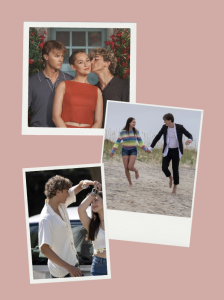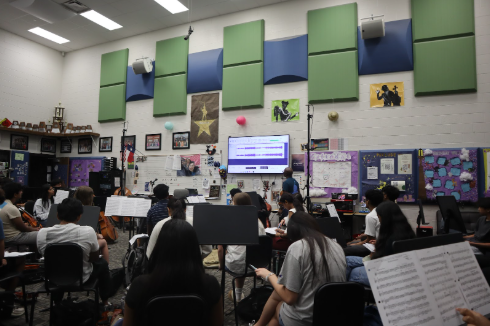Thrifting vs. Fast Fashion: The Ultimate Ensemble Battle
February 14, 2022
Some of your favorite online-only stores, like Shein and Romwe, are destroying our planet. If you can afford them, you can afford thrifting! Thrifting is when you purchase secondhand clothes to benefit a charity; however, fast fashion is cheap clothing produced in mass amounts in response to the latest trends.
According to Berkeley Economic Review, “in the past decade, thrifting has taken on a completely new life, especially among individuals of Generation Z.”
Thrifting provides a stable source of revenue for local charities. For example, Thrift Giant, a store chain with a location in The Colony, benefits CCA, Christian Community Action.
Thrifting also helps the environment. The average person throws away 81 pounds of clothes every year, and in landfills, it takes a plain, organic cotton t-shirt 5 to 6 months to decompose. By not throwing away clothes, donating them to thrift stores, and shopping at said thrift stores, thrifters are saving their carbon footprint.
“I really like to thrift because it’s fun, cheap, and good for recycling purposes,” thrifter Jeniseia Pyburn said.
Here at Reedy, we have a very populous Fashion Club. The President, Eva Marchesi, and Vice President, Jaque Spradley, encourage Reedy students to thrift.
“I would pick thrifting over fast fashion due to it being a cleaner fashion option and how it contributes to the sustainability movement within the fashion industry,” said Marchesi.
“I can find really cute clothes from the early 2000’s for like three dollars. Plus, you can buy lots of funny graphic tees at thrift stores,” said Spradley.
While thrifting saves the environment, fast fashion negatively impacts it.
For a single fast fashion cotton t-shirt, it takes 400-700 gallons of water, and for a pair of jeans, it takes about 1,800 gallons of water. Wearing a cotton shirt and denim jeans wastes about 60 bathtubs full of water.
So exactly how does fast fashion work?
Fast fashion stores, like Shein or Romwe, mass-produce hundreds of different designs every week based on different trends; however, these companies throw away hundreds of items that “aren’t trendy”. Therefore, there are landfills full of fast fashion clothes and accessories.
However, because thrifting has become a trend recently, this is also a form of gentrification, and thriting prices are rising up because of it.
When upper and middle classes decide to infiltrate a lower income area, flip the houses, and drive the lower classes out, that’s called gentrification. Thrifitng was designed for lower class people; however because thrifting is so “trendy” with upper and middle class people, lower income families are suffering from that.
Now that you’ve heard the benefits and consequences of fast fashion and thrifting, which do you think is better for the environment? The world? Lower income families?
Scan this QR code to vote!









